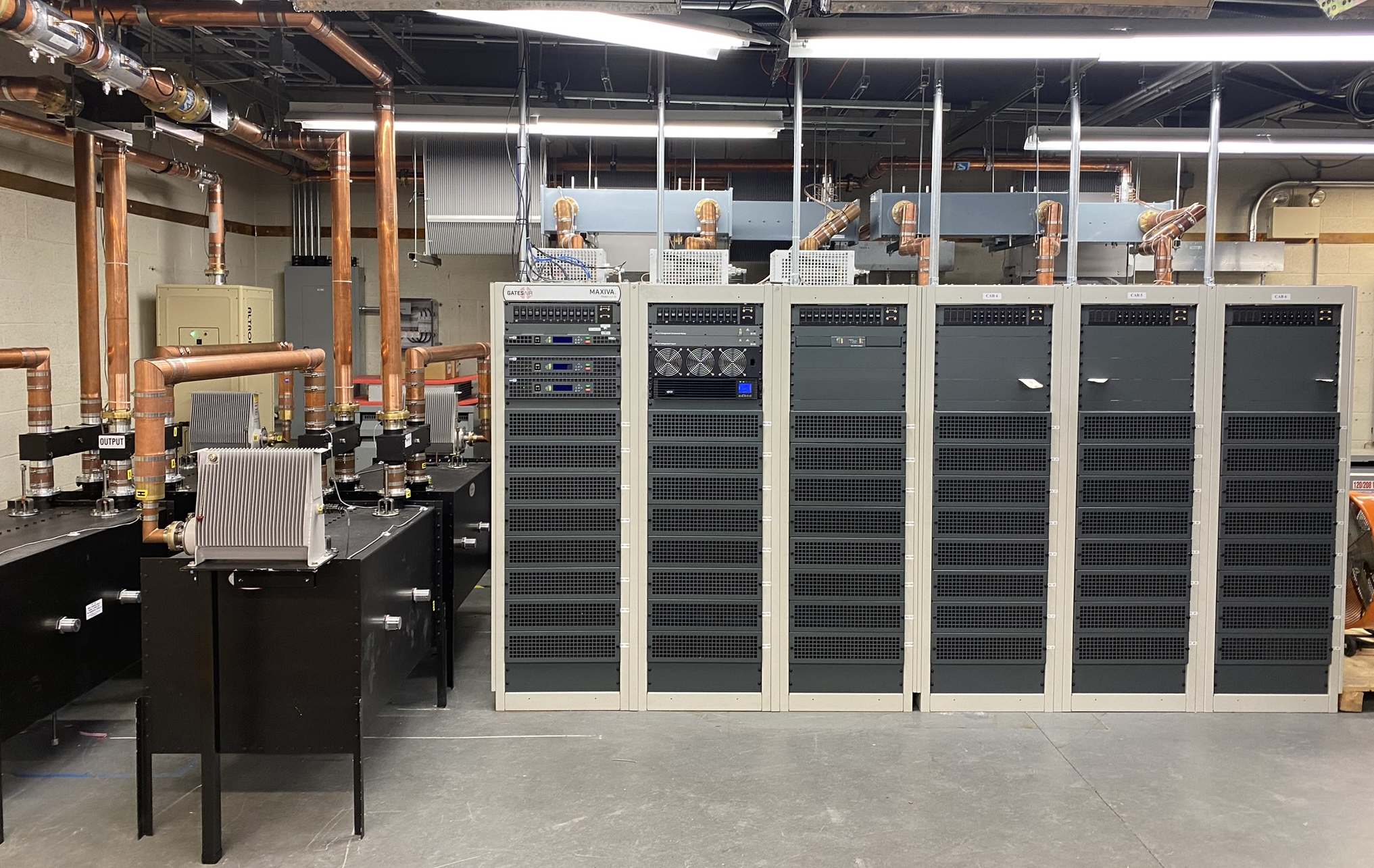WFMZ-TV Increases VHF Power Output and Coverage with GatesAir
Allentown Pa. station overcomes challenges imposed by channel repack

ALLENTOWN, Pa.—WFMZ-TV 69 is an independent VHF station serving the Lehigh Valley and Berks County of eastern Pennsylvania. At 80.6kW ERP, WFMZ’s over-the-air signal penetrates the Philadelphia market to the south, east into New Jersey, and several counties north and west.
After the repack ended in 2020, WFMZ moved from its 800kW UHF Channel 46 to WBPH Bethlehem’s 80 kW Channel 9, also shared by WLVT Bethlehem, which also broadcasts WPPT Philadelphia in SD on its shared space.
Post-Repack Challenge
Post-repack, various technical challenges reduced our signal penetration. The original Channel 9 antenna was a Horizontal polarized six-bay directional antenna with a transmitter TPO of 10kW. The sharing partners agreed to solve the lost signal problem by moving to an omnidirectional, four-bay antenna system with 50% horizontal and 50% vertical polarization and doubling the power of our existing GatesAir 20kW Maxiva VAXTE VHF transmitter to 40kW TPO.
To my understanding, this is the highest power air-cooled VAXTE transmitter GatesAir has produced, and it has once again powered our signals into the neighborhoods we lost post-repack.
We had the choice of increasing our transmitter size or starting over with liquid-cooled. We chose the former, and our refurbished Maxiva VAXTE went live in January 2023. Along with price point and confidence in their longevity and technical support, we stayed with GatesAir because they were a common denominator for all three broadcasters in the channel-sharing agreement.
That importance is amplified by the fact that the transmission systems are on the WFMZ property. WFMZ’s studios and tower are colocated on South Mountain in Allentown, and we have long hosted the other two stations’ transmission systems.
GatesAir and their installation partner managed the original installation and upgrade. We updated the coaxial and electrical infrastructure inside our transmitter building in 2018, and installed a constant impedance filter (CIF) to take the VAXTE signal to the antenna. Rather than replace it in the upgrade,
GatesAir suggested we add a second CIF to the “new half” of the transmitter and combine the two signals at the output. With 48 power amplifiers in the VAXTE, managing the timing, combining and line lengths for the RF signal, sampling, measuring, and correction is a weighty challenge. Their service team worked through those challenges, and the result has been impressive.
The New Footprint
Our new transmitter footprint spans six cabinets, with eight amplifier modules per cabinet. While that seems big, it is expected for an air-cooled transmitter at this TPO. Full-sized doors on the rear of each cabinet provide access for maintenance. Replacing an amplifier module is simple, with only some quick disconnects required while the transmitter remains on the air.
We use redundant Maxiva XTE exciters in the transmitter. These are ATSC 3.0-upgradeable units that provide stable power and meet all performance specifications for the signal. The VAXTE’s web GUI allows us to monitor exciter performance and drill down to see the voltages, currents and temperatures for each PA module, as well as reflected power and general power output from the transmitter. Connectivity to a remote-control system provides alarming if any power thresholds are crossed.
Viewer response to the increase has been positive. A contributor to an online local broadcasting forum recently commented that WFMZ’s signal once again reaches into his neighborhood on the market’s outer edges, and a family member of our staff reports she can now receive the station at her home northwest of Philadelphia. That tells me that the transmitter and antenna system upgrade have fulfilled the purpose of improving our coverage.
More information is available at www.gatesair.com.
Get the TV Tech Newsletter
The professional video industry's #1 source for news, trends and product and tech information. Sign up below.
Dennis Nice has been on the WFMZ engineering team since 1980.
